Information Signs
- 1/26
This information sign indicates that if you take the road on your right, it will not lead to any other through road. It’s a dead end.

This information sign indicates that the road you are currently traveling on will come to a dead end within a short distance. There is no way to continue straight through.
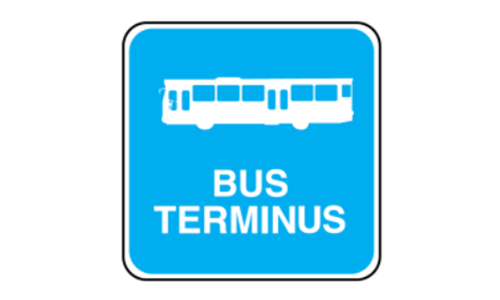
The BUS TERMINUS signal indicates that this facility is specifically for buses to use as a terminal for parking, loading, and unloading passengers.

This sign clearly indicates a designated bus stop and specifies that other vehicles, except omnibuses (a type of bus), are prohibited from parking or stopping within 9 metres of the bus stop or within the marked bus bay.
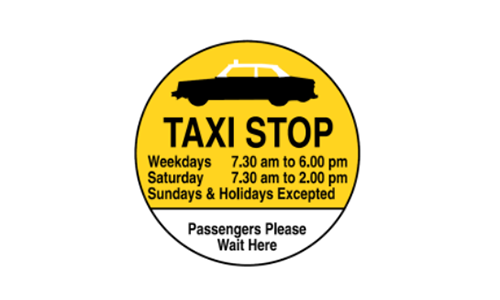
This sign designates a specific TAXI STOP that is operational during the listed hours on weekdays and Saturdays (with Sundays and holidays excepted). Passengers are also instructed to wait here.

The sign indicates that this is a designated area where a maximum of six taxis can park or wait for passengers. Other vehicles are not permitted to use this space.

This sign shows Normal Bus Lane Hours. Vehicles other than buses are restricted from using this lane during the specified times on weekdays.
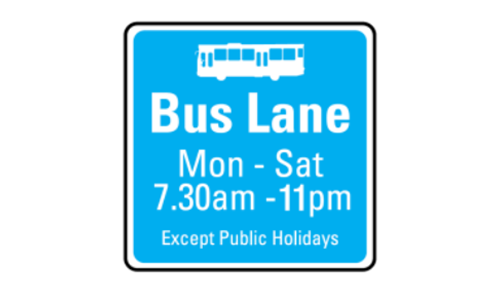
This is a Full-Day Bus Lane sign. It restricts use by non-bus vehicles from 7.30am to 11.00pm, Monday through Saturday (except public holidays). These lanes are marked with continuous yellow-and-red lines for easy identification.
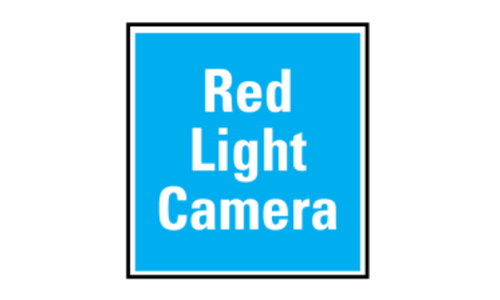
This sign warns of a red light camera ahead. Drivers should prepare to stop when the signal turns amber to avoid triggering the camera. Running a red light at such junctions can result in fines and demerit points.
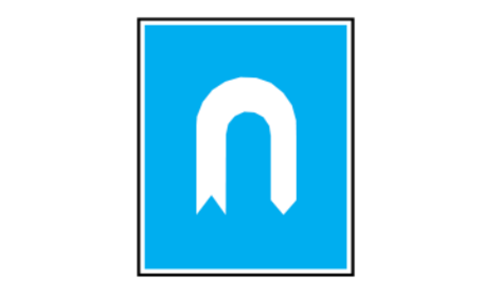
This sign indicates a U-turn facility ahead. Drivers should continue past the sign before making a U-turn at the designated spot. It’s important not to make the turn too early, as it could be unsafe or illegal.

This U-turn sign includes a vehicle weight restriction. Only vehicles with an unladen weight of 2500 kg or less are permitted to make a U-turn. Heavier vehicles must continue ahead and look for an alternative turning point.
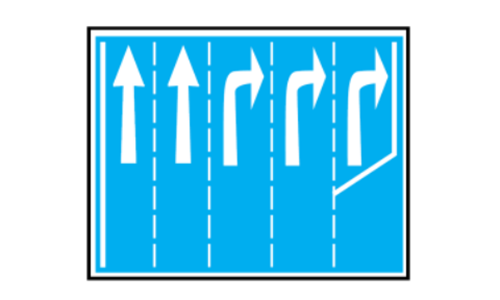
This sign shows that there are three turning lanes ahead, each designated for a specific direction. Drivers must signal in advance and merge into the correct lane based on their intended direction to ensure a smooth and safe turn.
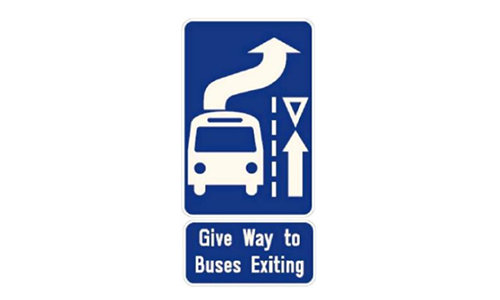
This sign indicates a Bus Priority Box, where drivers must give way to buses exiting a bus stop. You should slow down, watch for buses, and stop before the give-way lines if needed. It is prohibited to wait inside the yellow box—doing so blocks the bus and violates traffic rules.

This sign informs drivers that four waiting lanes are available for turning at the upcoming intersection. Vehicles may use any of the lanes to wait for a turn. Drivers must also stop for pedestrians crossing the road in this area.
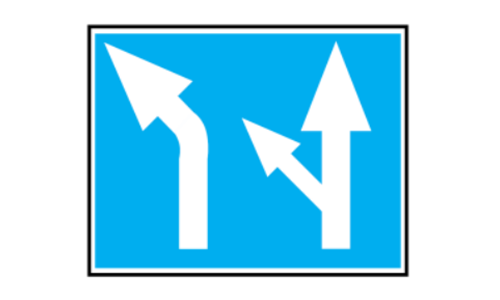
This sign indicates an exclusive left-turn lane and a shared lane (for both straight and left turns). Drivers should filter into the appropriate lane early, depending on their intended direction of travel.
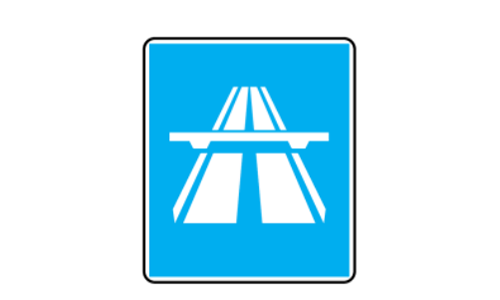
This blue sign with a depiction of a multi-lane highway signifies the start of an expressway. Upon encountering this sign, drivers should be aware that they are entering a high-speed road with specific regulations that they must now adhere to.
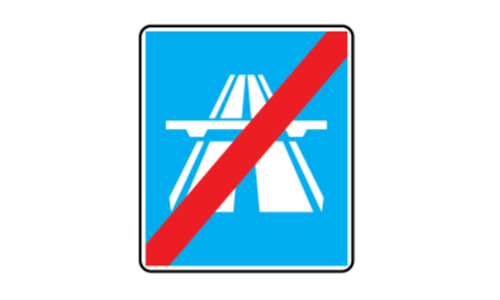
This sign indicates the end of the expressway. Drivers should reduce their speed and be prepared to adapt to the traffic conditions and regulations of the road they are about to enter, which will likely have a lower speed limit and different rules than the expressway.

This blue sign with a white umbrella and a raindrop signifies a rain shelter specifically intended for motorcyclists. Riders can stop and protect themselves from rain, providing a temporary respite during inclement weather.
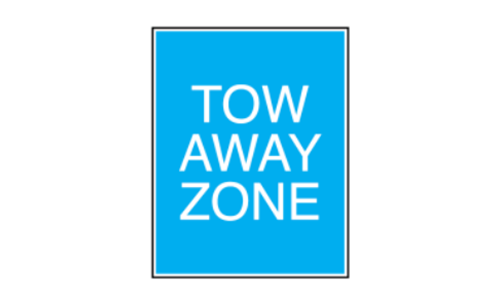
This sign clearly warns that any vehicle parked in this designated area is liable to be towed away. The owner of the towed vehicle will be responsible for paying the towing and storage fees to retrieve their vehicle.

This blue sign indicates the hours during which the traffic signals will not be operational. Drivers should treat the intersection as an uncontrolled one and proceed with caution.

A white walking stick is a recognized symbol indicating that the pedestrian is blind or visually impaired. Drivers are instructed to slow down and be prepared to stop. They must yield the right of way to individuals using a white cane who are crossing or attempting to cross the road to ensure their safety.
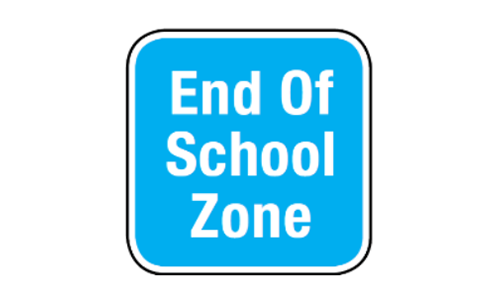
This sign indicates to drivers that they are leaving an area with specific school zone regulations, such as reduced speed limits and increased penalties for traffic violations. Drivers can now resume normal driving speeds and are no longer under the specific restrictions of the school zone.

Silver Zone refers to areas with specific amenities or considerations for senior citizens. Therefore, the End Of Silver Zone sign signifies the termination of special services or regulations related to senior citizens in that zone are no longer applicable beyond this sign.
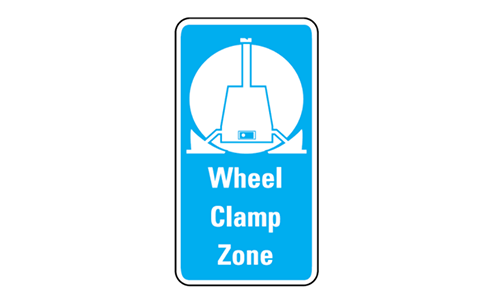
Any vehicle parked improperly within this zone is at risk of having a wheel clamp applied to prevent it from being moved until a penalty is paid.

The blue and white sign warns drivers of speed regulating strips ahead, often in the form of rumble strips or speed bumps, are present on the road. It instructsdrivers to reduce their speed to safely and comfortably navigate these road features.

This sign indicates that automated surveillance technology is used to monitor parking in this zone. The presence of such a system implies that parking violations will be recorded, potentially leading to the fines and demerit points mentioned below the sign.
 Pass the Exam easily with Premium Practice Tests | Unlock All with 7 Days Plan
Pass the Exam easily with Premium Practice Tests | Unlock All with 7 Days Plan  Offer Ends in
Offer Ends in 
